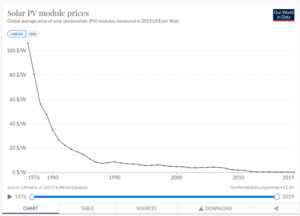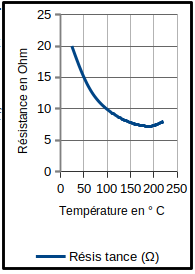Knowledge fuels change - Support energypedia!
For over 10 years, energypedia has been connecting energy experts around the world — helping them share knowledge, learn from each other, and accelerate the global energy transition.
Today, we ask for your support to keep this platform free and accessible to all.
Even a small contribution makes a big difference! If just 10–20% of our 60,000+ monthly visitors donated the equivalent of a cup of coffee — €5 — Energypedia would be fully funded for a whole year.
Is the knowledge you’ve gained through Energypedia this year worth €5 or more?
Your donation keeps the platform running, helps us create new knowledge products, and contributes directly to achieving SDG 7.
Thank you for your support, your donation, big or small, truly matters!
Photovoltaic Solar Cooking Without Batteries Using PTC Ceramic Heaters
Brief History of Cooking Energies
Since the conquest of fire, wood has been the main source of energy. For convenience, it was gradually replaced by charcoal, wood charcoal, gas or paraffin, whose heat capacity by weight is much greater.But then, coal, gas or paraffin, i.e. fossil fuels, replaced wood out of necessity, because wood sometimes does not renew itself at the same rate as it is harvested: a first in the history of humanity! And now there is a risk that fossil fuels will no longer be able to meet our needs. For the moment, they are in sufficient quantities, but beyond a few speculative jolts, it seems inevitable that the price curve can only rise, to the point where fossil fuels become difficult to access for the poorest part of the population. Grid electricity, which is mainly fossil fuel derived energy, follows the same path.
Another solution is to use the mother of all energies, i.e. the sun.For several decades, a great deal of engineering and imagination has been devoted to solar thermal cooking, see for example Luther Krueger's "Museum of Solar Cookers" in Minneapolis, USA.[1] Meanwhile, to provide electrical power to space satellites, the emerging photovoltaic technology has made great strides. The exorbitant initial costs have followed a steady downward curve[2][3], which now crosses the upward curve of other energies. What about using photovoltaic energy for cooking? Articles appeared on the subject around 2013[4]. Since then, the price of photovoltaic collectors has continued to fall. The cards have been reshuffled and solar cooking is now economically viable[5][6].
But when it comes to implementing it, there are two obstacles to overcome.
PTC Ceramic Resistors
Like all resistors, ceramic material produces heat when an electric current flows through it. But as it heats up, its electrical resistance decreases. At 200°C the resistance is divided by three compared to the ambient temperature, so its heating power is multiplied by three. Then, beyond 200°C, the resistance increases sharply until it becomes very high, the electric current can no longer flow, and heat production stagnates[7][8][9][10].
On the right : Example of the variation of the resistance of a ceramic as a function of its temperature, in the temperature range of interest.
Reference
- ↑ Luther Krueger 2015 Museum of Solar Cookers Minneapolis http://www.consolfood.org/wp-content/uploads/2015/12/CSF-Webinar-Museum.pdf
- ↑ https://www.ledevoir.com/environnement/701346/le-prix-des-panneaux-solaires-en-chute-libre-depuis-20-ans . sourc: IPCC 2022
- ↑ https://ourworldindata.org/search?q=solar+PV+modules+prices 2019 sourc : Lafond et al.(2017) & IRENA database ; for more accuracy, download the .csv and/or the .svg file
- ↑ 4 Batchelor S (2013). Is it time for Solar electric cooking for Africa? Gamos Concept note http://www.gamos.org/images/documents/Is%20it%20time%20for%20Solar%20electric%20cooking%20for%20Africa%2018062013.pdf
- ↑ Energy Sector Management Assistance Program. 2020. Cooking with Electricity: A Cost Perspective. World Bank, Washington, DC. © World Bank. License: CC BY 3.0 IGO. https://openknowledge.worldbank.org/handle/10986/34566
- ↑ John Leary 2021 Battery-supported eCooking: A transformative opportunity for 2.6 billion people who still cook with biomass https://doi.org/10.1016/j.enpol.2021.112619
- ↑ © EPCOS AG 2012. https://www.tdk-electronics.tdk.com/download/531162/d78540dfe0589d2bd90cabef477c90b9/pdf-general-technical-information.pdf
- ↑ https://en.wikipedia.org/wiki/Thermistor .
- ↑ http://en.hn-yongli.com then search for " PTC heaters with shell "
- ↑ http://www.tiancheng-ptc.com/en/company.htm





















